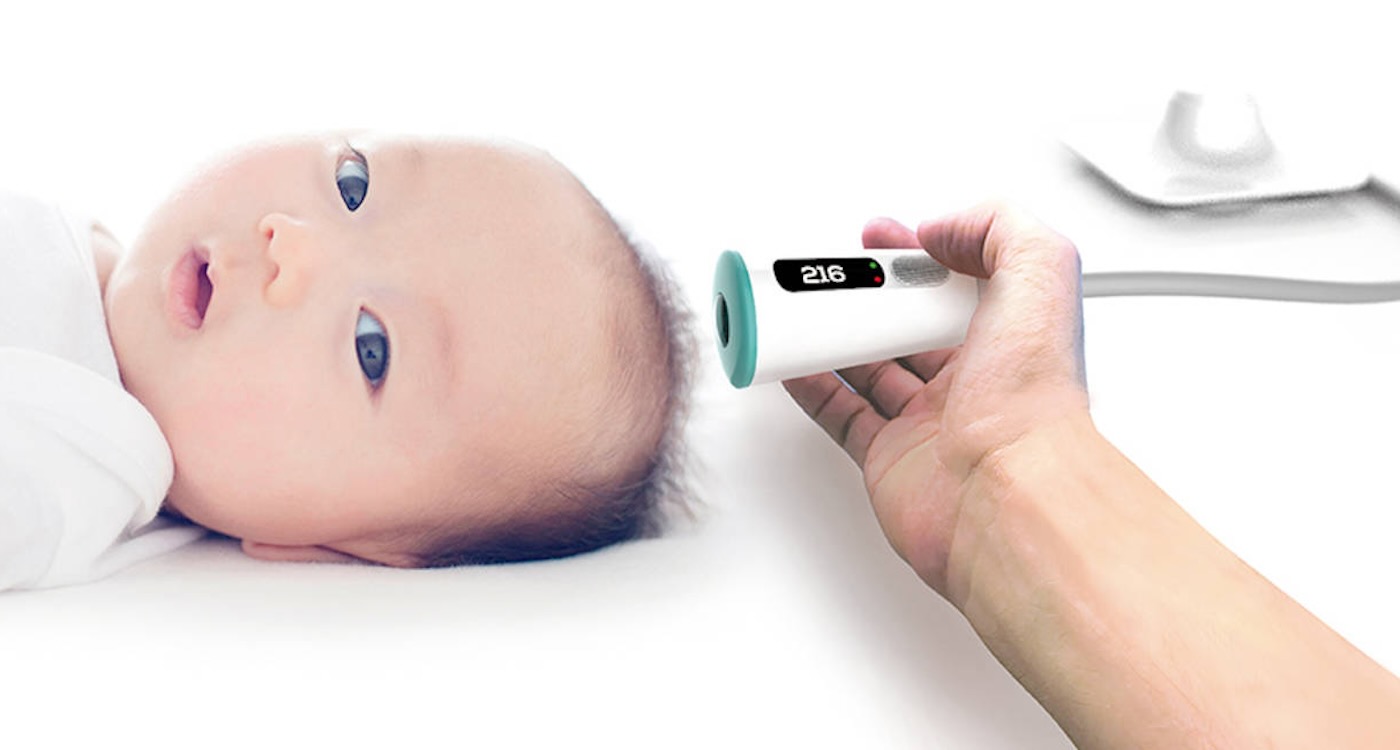
Meningitis can be quickly spotted in babies with “great accuracy” thanks to a new non-invasive device developed to do the testing anywhere it’s needed.
A study showed that it identified the potentially deadly infection in new-borns and infants with 94% accuracy, potentially transforming current screening methods based on traditional lumbar punctures.
Doctors say the high-resolution ultrasound device offers a non-invasive alternative to a lumbar puncture, also known as a spinal tap, where a needle is inserted into the lower back to collect cerebrospinal fluid (CSF) for analysis.
Meningitis is an inflammation of the membranes surrounding the brain and spinal cord. When caused by bacteria or fungi, it can be fatal if not diagnosed and treated early. Even in cases where the disease is overcome, it can leave serious after-effects, including brain damage.
Despite medical advances in recent decades, meningitis remains a major threat to child health, and diagnosing it currently requires a spinal tap to collect the fluid—an invasive technique with associated risks.
The new international study, published in the journal Pediatric Research, was led by scientists at the Barcelona Institute for Global Health (ISGlobal) in Spain, and involved patients at hospitals in Spain, Mozambique, and Morocco.
The aim was to validate the ‘Neosonics’ device, which uses high-frequency ultrasound applied through the baby’s open fontanelle, the membranous gap between the bones of the skull, which has not yet closed- to visualize and analyze CSF.
A deep learning algorithm interprets the images, identifies and counts the cells, and determines whether there are inflammatory signs consistent with meningitis.
“The device was able to correctly classify 17 out of 18 meningitis cases and 55 out of 58 controls without meningitis,” said lead author Dr. Sara Ajanovic, of ISGlobalin, in the team’s media release in English. (Spanish version here.)
“Specifically, it detected high white blood cell levels in cerebrospinal fluid with approximately 94% sensitivity and 95% specificity.”
AMAZING: World’s Smallest Pacemaker is Made for Newborns, Activated by Light, and Requires No Surgery
She says the new device—cost-effective, portable, and easy to use—could not only reduce lumbar punctures, but can also be used in clinically unstable patients where lumbar puncture aren’t possible.
Study senior author Professor Quique Bassat, ISGlobal’s director general, explained: “Introducing a non-invasive tool could reduce unnecessary antibiotic use, prevent complications associated with lumbar puncture, and improve both early diagnosis and non-invasive monitoring of treatment response.”
One of the project’s objectives was to bring health care to all inhabitants of Morocco, where the mortality risk of children living in rural areas is double that of those living in urban areas.
“Neosonics can provide the Moroccan health system with a tool to improve access to health for the entire population, both in cities and in regions furthest from the public health system network,” says Javier Jiménez, CEO of New Born Solutions, the Spanish company that developed and manufactured the device.
The study, funded by the Bill and Melinda Gates Foundation, was conducted between 2020 and 2023 and included more than 200 babies aged up to 24 months. Its validation of Neosonics marks a first step towards incorporating the valuable tool into clinical practice.
SHARE WITH PEDIATRICIANS By Posting on Social Media…

